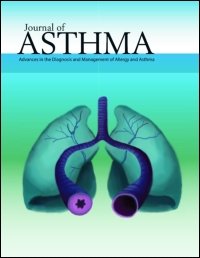
Angelica Tiotiu, Plamena Novakova, Ilaria Baiardini, Andras Bikov, Herberto Jose Chong-Neto, Jaime Correia-de-Sousa, Alexander Emelyanov, Enrico Heffler, Guillermo Guidos Fogelbach, Krzysztof Kowal, Marina Labor, Stefan Mihaicuta, Denislava Nedeva, Slviya Novakova, Paschalis Steiropoulos, Ignacio J. Ansotegui, Jonathan A. Bernstein, Louis-Philippe Boulet, Giorgio Walter Canonica, Lawrence DuBuske, Carlos Nunes, Juan Carlos Ivancevich, Pierachille Santus, Nelson Rosario, Tommaso Perazzo & Fulvio Braido (2021) Manifesto on United Airways Diseases (UAD): An Interasma (Global Asthma Association – GAA) document, Journal of Asthma, DOI: 10.1080/02770903.2021.1879130
Abstract
The large amount of evidence and the renewed interest on upper and lower airways involvement in infectious and inflammatory diseases has led Interasma (Global Asthma Association) to take a position on United Airways Diseases (UAD). Starting from an extensive literature review, Interasma excecutive committee discussed and approved this Manifesto developed by Interasma scientific network (INES) members. The manifesto describes the evidence gathered to date and defines, states, advocates, and proposes issues on UAD (rhinitis, rhinosinusitis and nasal polyposis), and concomitant/comorbid lower airways disorders (asthma, chronic obstructive pulmonary disease, bronchiectasis, cystic fibrosis, obstructive sleep apnoea) with the aim of challenging assumptions, fostering commitment, and bringing about change.
UAD refer to clinical pictures characterized by the coexistence of upper and lower airways involvement, driven by a common pathophysiological mechanism, leading to a greater burden on patient’s health status and requiring an integrated diagnostic and therapeutic plan.
The high prevalence of UAD must be taken into account. Upper and lower airways diseases influence disease control and patient’s quality of life. Patients with UAD need to have a timely and adequate diagnosis, treatment, and, when recommended, referral for management in a specialized center. Diagnostic testing including skin prick or serum specific IgE, lung function, fractional exhaled nitric oxide (FeNO), polysomnography, allergen-specific immunotherapies, biological therapies and homebased continuous positive airway pressure (CPAP) whenever these are recommended, should be part of the management plan for UAD. Education of medical students, physicians, health professionals, patients and caregivers on the UAD is needed.
